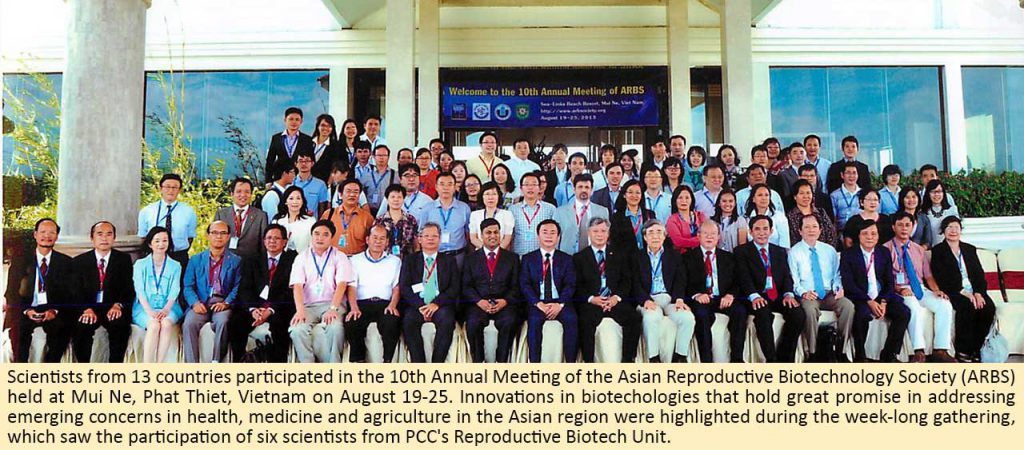Innovations in biotechnologies that hold great promise in addressing emerging concerns in health, medicine and agriculture were underscored in the 10th Asian Reproductive Biotechnology Society (ARBS) Meeting held August 19 to 25 in Mui Ne, Phat Thiet, Vietnam.
Established in 2004, the ARBS is a non-profit organization that seeks to promote the educational and scientific interests of the reproductive biotechnology research community throughout Asia.
With over 200 scientists and students from 13 countries in attendance, recent advances in different areas of biotechnology, and insights on the status and technological developments in human and animals were discussed during the conference.
The participants were from China, Japan, Czech Republic, North Korea, South Korea, United States, Australia, Vietnam, Singapore, Thailand, Philippines, India and the United Arab Emirates.
The scientific papers presented focused on advances in assisted-reproductive technology (ART) in human medicine, gene and cell therapy, reproductive health, transgenic animal, cloning research, embryonic stem (ES) cells and induced pluripotent stem (IPS) cells, germ cells growth, and embryo development.
Other papers highlighted related topics on reproductive biomedicine, clinical research advances and genome preservation.
The event also served as an occasion for discussions among scientists, students and practitioners across the Asian Region on collaborative research and business opportunities.
Six delegates from the Philippine Carabao Center conducted paper and poster presentations. Dr. Danilda H. Duran, Dr. Edwin C. Atabay, Dr. Eufrocina P. Atabay, Dr. Lerma C. Ocampo, Dr. Flocerfida P. Aquino, and Excel Rio S. Maylem of the Reproductive Biotech Unit comprised the PCC delegation.
Maylem won eighth place in a field of 63 competitors in the poster presentation category. Her poster was on “Ensuring the Quality of Bovine Embryos produced In-Vitro through the Inner Cell Mass and Trophectoderm Ratio.”
Maylem’s study determined the allocation of inner cell mass and trophectoderm of bovine embryos in-vitro in relation to its developmental stage and age. It is now used as a benchmark for determining good quality embryos for embryo transfer.
Overall, the conference provided the participants knowledge and insights on alternative technologies in increasing the productivity and profitability of the livestock industry and improving different areas of reproductive biotechnologies, both in human and animals.
The event coincided with the commemoration of the 10th year of ARBS. It was co-organized by the ARBS, Ministry of Science and Technology of Vietnam, Vietnam National University in Ho Chi Minh City, the city’s Center for Biotechnology and Tan Tao University.

